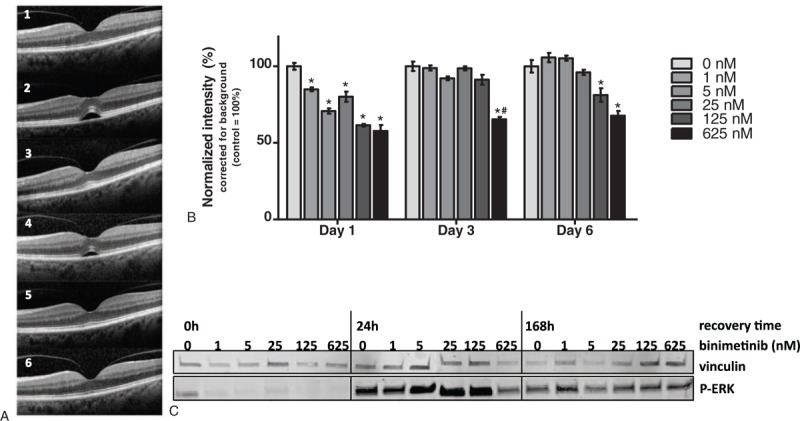FIGURE 1.

Illustration of the reversibility of binimetinib-associated serous retinopathy. (A) Ophthalmic imaging of the retina during binimetinib treatment of a 56-year-old female with metastatic cutaneous melanoma. At initial screening, the patient had a normal overall arrangement of the retinal layers (1). Eleven days after start of treatment an accumulation of subretinal fluid (SRF) had developed (2). Besides seeing dark flecks, the patient did not have ocular complaints. Thirty days after treatment started, SRF had disappeared despite continuation of medication (3). After discontinuation and restart of medication recurrence of SRF occurred (4), and (permanent) disappearance of SRF could be detected upon discontinuation of treatment due to a bad physical condition of the patient (5, 6). (B) Mild growth inhibition of ARPE19 cells upon increasing concentrations of binimetinib. Bars represent mean with SEM, control (0 nM) was set to 100%, and the intensities were corrected for background. ∗P < 0.05 compared to control (0 nM), and #P < 0.05 compared to treatment with 125 nM. (C) Regain in ERK phosphorylation after 24 and 168 hours of recovery after treatment of ARPE19 cells with binimetinib. Both during treatment and recovery, vinculin expression was stable. ERK = extracellular signal-regulated kinase, SEM = standard error of the mean, SRF = subretinal fluid.
